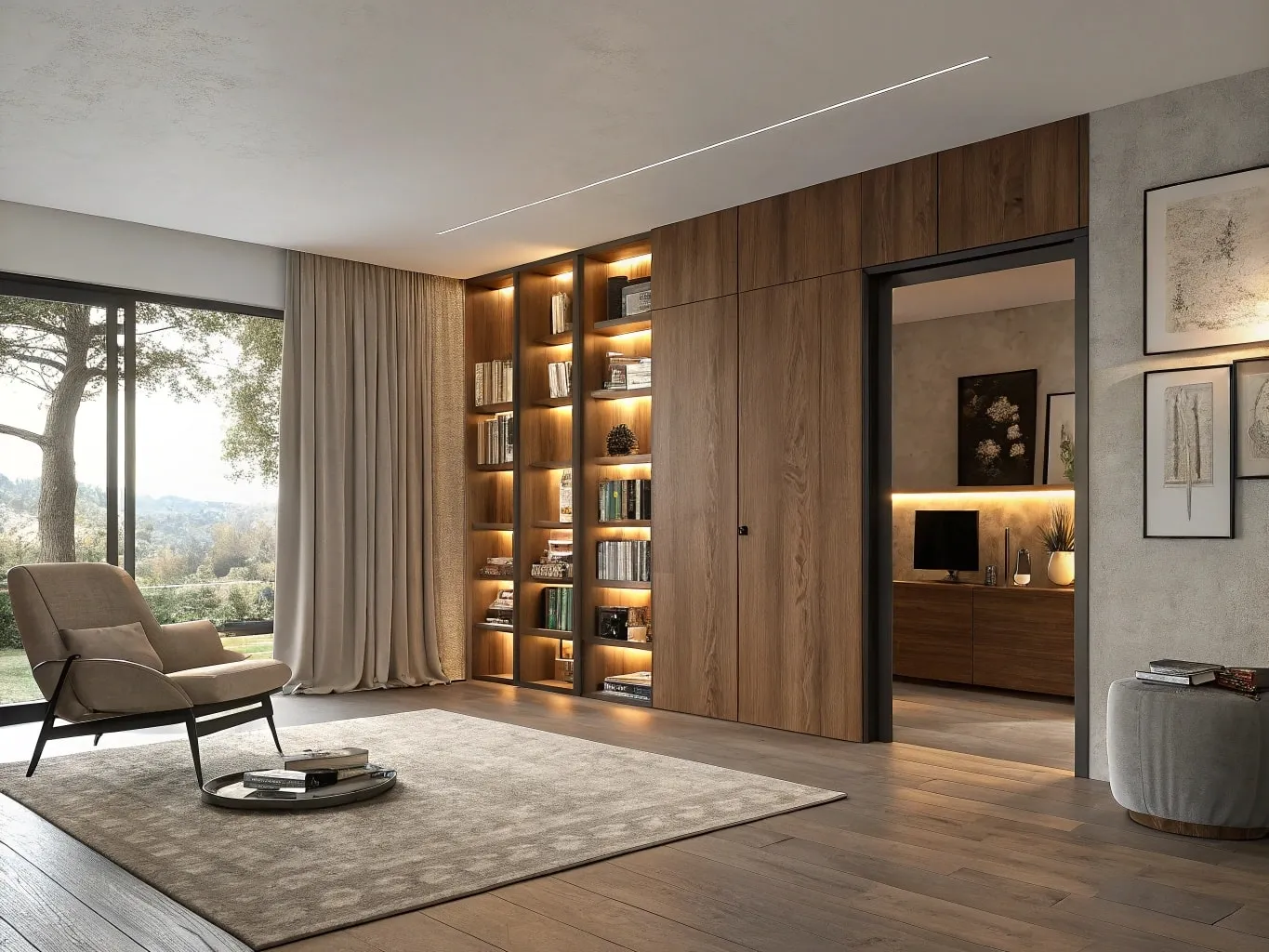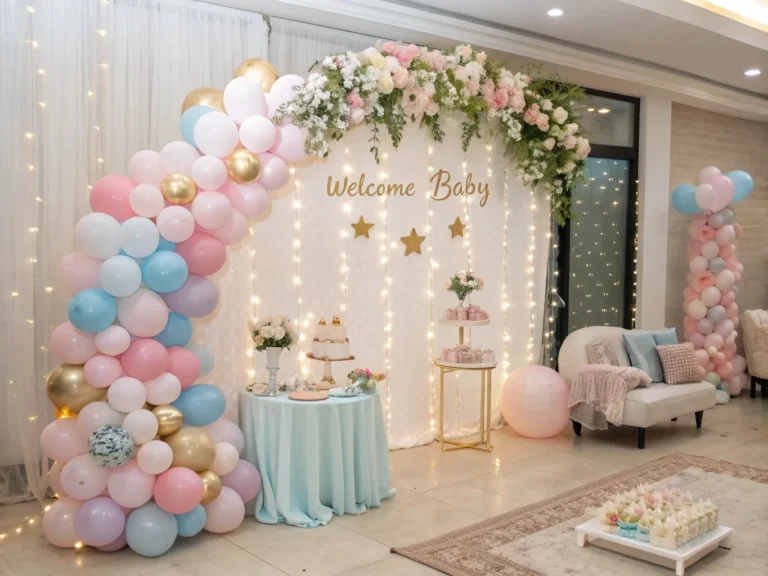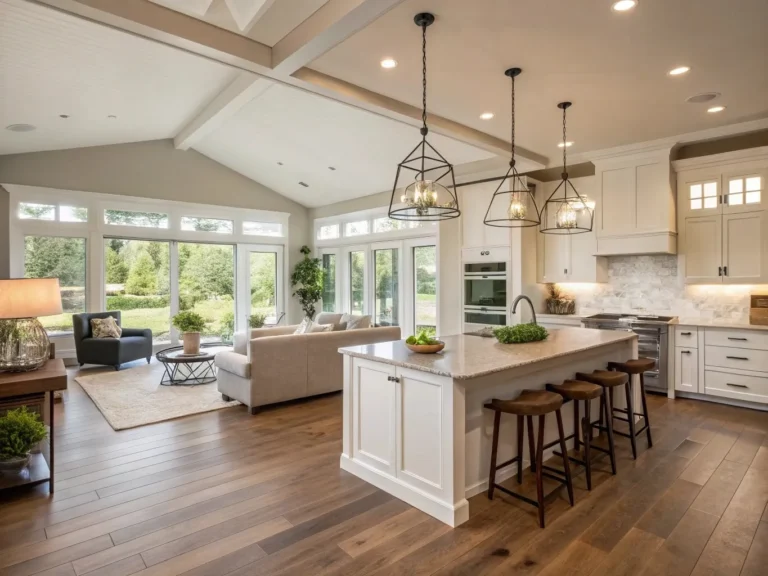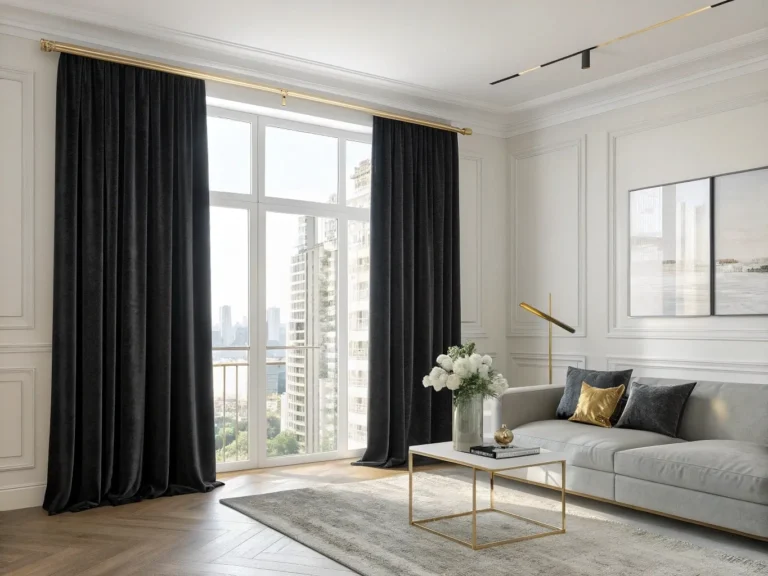Smart Hidden Door Ideas to Add Style, Security, and Surprise to Your Home

Hidden doors have evolved from being secret passageways in castles to clever architectural features in modern homes. Whether you want to create a concealed storage area, hide a private office, or simply add a touch of mystery and sophistication to your space, hidden doors provide function while sparking curiosity. More than just gimmicks, these doors serve both practical and aesthetic purposes from enhancing home security to maintaining a clean, uninterrupted interior look.
We’ll explore best smart hidden door ideas that suit various styles from modern minimalism to rustic farmhouse. Whether you’re remodeling a room or designing from scratch, these ideas can seamlessly integrate with your layout and elevate the feel of your home.
Hidden Door Behind Bookshelves
A timeless classic, the bookshelf door adds a secretive charm while keeping your space functional. It looks like a standard built-in bookshelf, but it swings open to reveal a room, closet, or hallway.

This idea works beautifully in home offices, libraries, or living rooms. You can even integrate it with a full wall of shelves to make it almost undetectable. Go with real hardwood for an elegant, sturdy finish.
It’s not only clever, it’s conversation starting and adds a vintage, mysterious feel to any home.
Concealed Pantry Door in Kitchen Cabinets
This hidden door blends perfectly into your kitchen cabinetry, providing access to a walk-in pantry without disrupting your sleek kitchen design.

The door matches the rest of your cabinet fronts and uses a push-to-open system to avoid visible handles. It’s a smart, discreet way to keep food storage organized without cluttering the space.
Perfect for modern kitchens where minimalism meets functionality.
Mirror Door for Small Spaces
In tight hallways or bedrooms, a full length mirror that doubles as a door is a genius design solution. It serves its reflective purpose while leading to a closet, bathroom, or utility room.

The key is flush framing and a pivot hinge or sliding system. It saves space, adds visual depth, and keeps the room feeling open.
Ideal for apartments or modern bedrooms where every inch counts.
Hidden Door Behind Wall Paneling
Wall paneling already brings texture and warmth to a room so incorporating a hidden door into the paneling is an effortless disguise. Whether you use beadboard, shiplap, or slatted wood, the door vanishes into the pattern.

This is especially effective in mudrooms, hallways, or transitional areas where visual continuity matters. Use magnetic latches or concealed handles for a seamless finish.
It’s one of the most stylish ways to hide utility spaces without breaking the design flow.
Sliding Hidden Barn Door Within a Wall
Unlike traditional barn doors that slide on the outside, a hidden barn door is recessed into the wall cavity sliding in and out of view with minimal footprint.

It’s perfect for bedrooms, bathrooms, or dens where you want privacy without a swinging door taking up space. Use reclaimed wood for a rustic touch or metal finishes for industrial appeal.
An ideal mix of function and aesthetic for space-conscious homes.
Wall Art That Opens as a Door
Turn your favorite artwork into an unexpected entryway by hinging a large canvas or framed piece over a doorway. Behind it, you can hide a safe, utility closet, or storage niche.

It’s one of the most creative ways to disguise a door while doubling as wall decor. This approach works best in eclectic or creative spaces.
A bold, artistic twist for anyone who loves design with a secret.
Hidden Office Door in a Built-In Closet
If you work from home but crave privacy, hiding your office behind a built-in closet or cabinet can help keep it out of sight when you’re off the clock.

The outer door looks like storage but opens into a small, organized workspace. This trick is especially useful in apartments or multipurpose rooms.
A sleek way to separate work and life without building an addition.
Concealed Bathroom Door in Bedroom Paneling
In luxury bedrooms, it’s common to hide an ensuite bathroom entrance within a wall of custom paneling or wardrobe doors.

The door looks identical to adjacent panels and uses soft close hinges or push latches. It maintains visual flow and gives the suite a refined, hotel-like feel.
A sophisticated way to keep private spaces elegantly hidden.
Under Staircase Hidden Storage Door
Make the most of unused space by building a hidden door under your staircase. It can lead to a full closet, wine cellar, or even a compact reading nook.

Camouflage the door with paneling, paint, or decorative trim to match the staircase. It adds both function and charm to transitional areas.
Smart storage meets stylish design perfect for family homes.
Faux Wall That Reveals a Safe Room
For homeowners focused on security, installing a faux wall that hides a reinforced safe room is a discreet and smart solution. The wall may be covered in wallpaper or decorative paneling.

When triggered, the hidden door swings or slides open, providing access to a room designed for emergencies or high value storage.
Peace of mind, built right into your walls.
Secret Basement Entry Beneath Flooring
A trapdoor hidden beneath a rug or wood flooring offers access to a wine cellar, storm shelter, or underground storage space. Hydraulic or lift assisted hinges make access smooth and safe.

It’s a dramatic and functional addition especially for homes with basements or historic cellars.
Perfect for collectors, preppers, or anyone who loves underground mystery.
Hidden Garage Entry Behind Faux Wall
This hidden door leads from the main living space into a connected garage or workshop. By disguising it behind a faux wall or large cabinet unit, you maintain the style of your interiors while accessing utility areas.

It’s especially helpful in homes where garages are part of open plan layouts and you don’t want visible doors.
Design friendly convenience with industrial practicality.
Secret Wine Room Behind a Display Shelf
For wine lovers, building a hidden wine room behind a display shelf or glass front cabinet creates the ultimate indulgence. Climate controlled, softly lit, and beautifully stocked, it’s a hidden gem in any upscale home.

The exterior cabinet may show a few select bottles, but opens to reveal rows of fine wine, a tasting table, and ambient lighting.
Luxurious, practical, and perfect for entertaining.
Bathroom Mirror Door to Utility Closet
In bathrooms, mirrors above the vanity can cleverly conceal a door to a plumbing access or supply closet. Hinged or sliding designs make it smooth and sleek.

It helps preserve aesthetics while making maintenance easier. Especially useful in small bathrooms where visible doors might clutter the look.
Form meets function in a discreet design move.
Camouflaged Entry Door from Exterior Wall
Some homeowners choose to build an entirely hidden entry into their home from a garden wall, hedge lined path, or decorative structure. The result is a near invisible entry point that leads directly inside.

Perfect for privacy, discreet access, or maintaining curb appeal in architecturally sensitive areas.
The ultimate hidden door for high-style exteriors.
Conclusion
Hidden doors are more than just architectural tricks. They’re smart, stylish solutions for homeowners who value clean design, privacy, and creativity. Whether you’re looking to conceal a closet, protect your valuables, or simply add a wow factor to your home, these 15 hidden door ideas prove there’s a practical and elegant way to do it.
As open-concept living and multi-use spaces become the norm, hidden doors offer a unique way to control what’s seen and what stays tucked away. From bookshelf doors to mirrored entries and trapdoors, every idea adds value and intrigue to your space.
FAQs – Hidden Door Ideas
Q1. Are hidden doors expensive to install?
Hidden doors can range from affordable DIY options to high-end custom builds. A bookshelf or mirror door may cost a few hundred dollars, while a professionally integrated panel or safe room entry could cost several thousand depending on materials and design complexity.
Q2. Can I add a hidden door in an existing wall?
Yes, hidden doors can be retrofitted into existing spaces, especially if your wall structure supports the opening. It’s easier with non-load-bearing walls and with expert help for flush finishes and hinge alignment.
Q3. What’s the best material for building a hidden door?
It depends on your style and location. For example, use MDF or hardwood for bookshelf doors, mirrored glass for bedroom or bathroom setups, or paneled wood for a classic seamless wall look. The key is matching it with the surrounding decor.
Q4. Are hidden doors safe for home security?
Yes, hidden doors actually enhance security when designed properly. Concealed safe rooms, hidden garages, or trapdoors can protect valuables or offer discreet exits. Reinforced hinges and secure latches increase their protective value.
Q5. Where are hidden doors most commonly used in modern homes?
Popular spots include behind bookshelves in home offices, inside kitchen cabinets leading to pantries, mirrored closet doors, panel-concealed bathroom entries, or secret wine rooms behind cabinets. Staircases and hallways also offer great space-saving potential.
Q6. Can I make a hidden door DIY-style?
Absolutely! DIYers can use prehung doors and match them with shelving, mirrors, or wall panels. Magnetic latches, concealed hinges, and flush mounts are easy to find and install with basic tools and tutorials.
Q7. Do hidden doors affect property value?
In many cases, yes — especially when done with quality craftsmanship. Hidden doors add charm, functionality, and a unique selling point that can appeal to homebuyers looking for smart design or added privacy.






